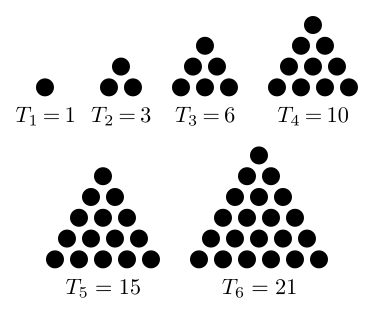You have to think about the nature of the triangular numbers: the $n$-th triangular number is the number of dots created by $n$ layers of dots stacked upon each other: the first (top) layer has $1$ dot, the next (below it) has $2$ dots, etc. The $n$-th and last layer of the $n$-the triangular number has $n$ dots:

Now, your inductive hypothesis is that the $k$-the triangular number consists of $\frac{k(k+1)}{2}$ dots, i.e. that
$$T_k = \frac{k(k+1)}{2}$$
Using that hypothesis, you have to show that the $k+1$-th triangular number has $\frac{(k+1)(k+2)}{2}$ dots. But note: the $k+1$-th triangular number adds a layer of $k+1$ dots to the $k$-th triangular number. That is, we know that:
$$T_{k+1}=T_k +(k+1)$$
So, use that fact, together with the inductive hypothesis, to show what you need to show, i.e. that
$$T_{k+1}=\frac{(k+1)(k+2)}{2}$$
